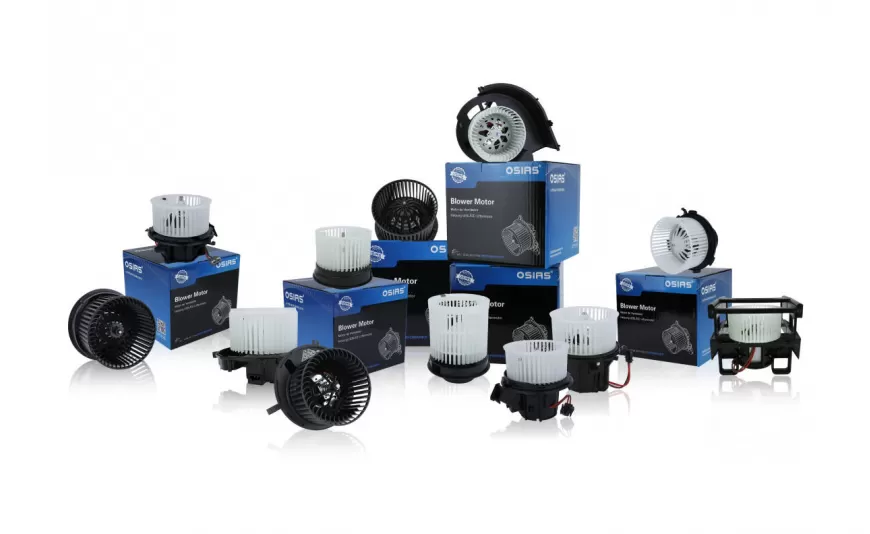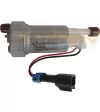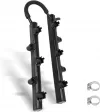
The car blower motor is a crucial component of the vehicle's heating and cooling system, often overlooked during routine maintenance. It is crucial to the air conditioning system's operation and helps to guarantee a comfortable ride, especially during the sweltering summer months. Despite its significance, many car owners must become more familiar with this OSIAS blower motor component.
This guide willexplore the blower motor's definition, various parts, and fundamental working principles. Understanding these aspects is essential for maintaining an efficient and reliable car climate control system. A more pleasant and relaxing driving environment is facilitated by routine blower motor maintenance and inspection.
Understanding The Blower Motor of a Car:
The car blower motor serves as a fan connected to the vehicle's heating and air conditioning system. Located in various places like the dashboard, engine compartment, or opposite the steering wheel, it plays a vital role in regulating airflow. An integral component, the blower motor includes a resistor that controls the current flowing through it, allowing fan speed adjustment.
Cars with fixed speed options (usually 4-5 variations) use a blower motor resistor, while those with automatic climate control systems feature an electronic blower motor control module. This module is also found in vehicles, offering the option to adjust the blower speed smoothly, enhancing overall climate control functionality.
How Does it Work?
The car's blower motor is a vital component in the heating and cooling system, responsible for moving air either from an external source or from the cabin past the heater core or air conditioning evaporator. This process facilitates heat transfer, affecting the interior or exterior temperature of the vehicle.
Blower Motor Location:
Typically situated under the dashboard near the kick panel on the right side of the car, the blower motor is strategically placed close to both the heater core and the evaporator. However, variations exist, such as having the blower motor under the hood in the center of the firewall.
Heat Transfer Mechanism:
The blower motor's primary function is to facilitate heat transfer. It achieves this by circulating air into the car's interior or expelling it outside, depending on whether the air is vented or passes through the heater core or air conditioning evaporator.
Speed Control with Blower Motor Resistor:
A resistor positioned near the blower's airflow path regulates the blower motor's speed.
Two types of resistors exist:
• One with coils of varying thicknesses, each producing different resistance for different speeds
• A newer transistorized type.
The resistor's location in the air stream aids in dissipating the heat generated during voltage reduction.
Manual and Automatic Climate Control:
The control head, responsible for managing the blower motor, can operate in manual or automatic climate control modes. The fan responds to manual settings in manual mode, while sensors come into play automatically.
These sensors monitor internal and external temperatures, adjusting fan speed to maintain a constant interior temperature. The automatic control system also integrates with door and window mechanisms, increasing fan speed when detecting open doors or windows to uphold the desired temperature.
Identifying Failures:
In the case of blower motor issues, common culprits are the blower motor resistor or the motor itself. A straightforward diagnostic approach involves checking for power at the blower motor connector. If power is present, the motor is likely faulty. If not, examining the resistor for power can pinpoint the issue. If neither component shows power, a malfunction in the control head is probable.
1. Electric Motor:
At the core of the Osias blower motorassembly is a 12V DC motor, a fundamental component responsible for rotating the fan. Older car models typically employ brushed motors, while newer ones feature more efficient and low-maintenance brushless motors, offering infinite speed levels.
2. Motor Blower Housing:
Surrounding the motor is the blower housing, serving as both a cover and the mounting surface for the device. Usually crafted from metal for durability, the housing undergoes coating or painting to prevent corrosion, ensuring sustained protection for the motor.
3. Blower Wheel:
The blower wheel, a pivotal part of the Osias blower motor, is the fan responsible for drawing and propelling air through the HVAC system. Typically composed of ribbed plastic, this wheel contains blades facilitating air movement. Maintaining a clean and debris-free blower wheel is essential for optimal motor functionality. Any obstruction can lead to motor damage or broken blades, emphasizing the importance of regular inspection and cleaning.
Understanding these distinct components, from the electric motor to the blower wheel, provides a comprehensive insight into the blower motor's construction. Regular inspection and maintenance of these parts contribute to a reliable and efficient car climate control system, ensuring a comfortable driving experience.
Determining the Interconnected Components of Blower Motor Systems
The blower motor for car AC systems depends on several other components to work. These include the following.
Control Module:
The electronic control module is a pivotal player in Osias blower motor systems. This sophisticated circuitry governs the blower motor's operation, utilizing input from sensors to adjust speed dynamically. This feature ensures efficient air circulation and enables automatic cabin climate control.
Resistor's Role:
The blower motor relies on a crucial component known as the blower motor resistor. This device regulates the current flow to the motor, influencing its speed. By employing various resistors, distinct speed levels are achieved. Modern vehicles seamlessly integrate the blower motor speed control with the Electronic Control Unit (ECU).
Protective Fuse:
A fuse is incorporated to safeguard blower motor circuits and HVAC system parts. This safety measure prevents damage caused by excessive currents during short circuits or overloads, addressing one of the common reasons for non-functional AC systems.
Relay for Added Protection:
Some Osias blower motor circuits feature relays, strategically switching on circuits connecting the blower motor to the car battery. This serves a dual purpose – protecting delicate control components on the dashboard and ensuring efficient power supply to the motor.
Essential Connectors:
The intricate network of blower motor components relies on connectors, encompassing cables and wire harnesses. These connectors are pivotal in conveying signals and electric currents to the motor, ensuring seamless functionality. Their proper functioning is paramount for effectively operating the Osias blower motor system.
Wrapping Up
The car blower motor, especially the Osias blower motor, is a critical component ensuring a comfortable driving experience by regulating air circulation in the vehicle's heating and cooling system. Understanding its working principles, components, and interconnected systems provides valuable insights for efficient maintenance.
Regular inspection and servicing of these components contribute to a reliable and enjoyable driving environment, emphasizing the importance of keeping the blower motor in optimal condition for a seamless climate control experience.












Write a comment